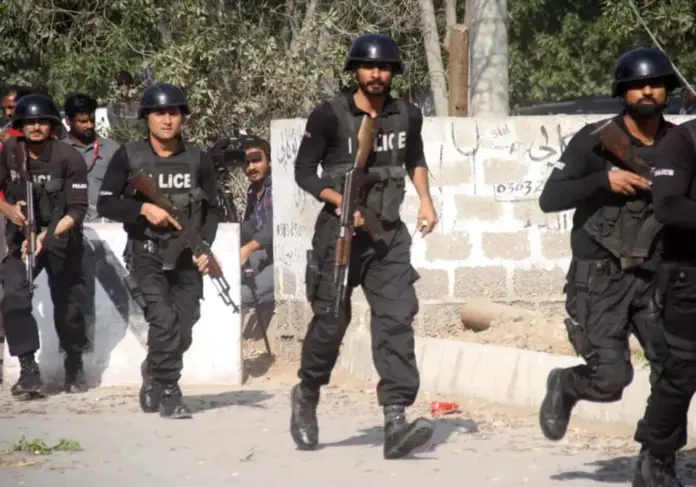The Karachi suicide attack was a deadly reminder that despite strides made in the battle against terrorism, the fight is far from over as a new spate of terrorist violence is emerging in the country. Given the fresh spate of terrorist attacks in the country, the federal cabinet led by Prime Minister Shehbaz Sharif has decided to revisit the National Action Plan (NAP) on terrorism that was devised in 2014 following the Army Public School carnage.
Every time a terrorist attack takes place, concerned authorities start searching for loopholes related to that particular incident. The formulation of NAP was aimed at bringing cohesion in the battle against terrorism. Since 2014, the NAP has been in place but still, terrorists find vulnerable targets to implement their nefarious designs, which shows that there was a certain flaw in the complete implementation of NAP. The latest surge in terror activities has renewed concerns for the security of citizens in the country. It is an unending phenomenon and there is no single formula that can be applied to eliminate the scourge of terrorism once and for all.
However, interprovincial cooperation and national unity can play a key role in the battle against terrorism. While putting provincialism aside, all concerned departments and ministries need to develop a centralised system to coordinate and implement plans to curb militancy. So far, the federal and provincial governments are working autonomously to deter terrorist activities, but a forum must be established at the centre to supervise and monitor all operations against terrorists.
While the ritual expressions of resolve to eradicate the menace of terrorism were trotted out, as usual, there was a need to put in place a centralised system that should overview NAP and its implementation. Necessary infrastructure and training need to be imparted to security institutions for this purpose. In this regard, the National Counter Terrorism Authority (NACTA) was created, in 2009, as an administrative wing within the Ministry of Interior but its progress has not been shared. Unfortunately, the NACTA that was billed as such a centre in the government’s national security policy remains populated by literally ‘two men and a dog’.
Another issue that affects the performance of NACTA is the lack of coordination among civilian and military security institutions. In most cases, these institutions prefer to work independently. These gaps and lack of coordination among departments are helping only the terrorists, who take benefit from these security lacunae and become successful in carrying out their evil agenda.
So far, NACTA has been left paralysed due to a lack of funds while other security agencies are non-cooperative. NACTA or some equivalent has to plug the gaps between the civilian and military sides of the counterterrorism strategy, organise a centralised database on the foundations of intelligence sharing and then work towards discovering the strengths, links and operational capabilities of the terrorist organisations to pre-empt their plans and smash them.
Without bringing the entire resources — human and material — of the state and society together, the enemy will always be one step ahead of us. The change in mindset and traditional modes of working requires nothing less than a revolution if we are going to get anywhere.
The implementation of the NAP is a shared responsibility and all institutions need to work within the ambit of the constitution. A strong coordination network is necessary among all provincial and federal institutions working to curb terrorism. Only then will the results of military operations prove long-lasting. Unless a central database is established, military operations alone will not help curb terrorism.
By setting up a central database, security agencies can also stop the duplication of efforts that often occur due to the non-existence of cooperation. The civilian leadership is mainly responsible for creating a central security network. If proper governance initiatives are not taken, terrorism will reproduce itself again and again. Only forming plans will give no benefit unless some practical steps are taken to address the root causes. It is time that the government should wake up to its responsibilities and fix the faults of the system. There was a dire need to implement all aspects of the NAP. Adequate supportive actions by civilian agencies are needed to ensure the long term gains of the military operations.
There is also a need to address the root causes of terrorism in the country. Pakistan needs to implement an effective strategy to shut those factories that produce such human bombs that unleash hell on innocent civilians.
The glorification of taking lives under the garb of jihad was something that sullies the narrative of the complete elimination of terrorism as several organisations distort religious injunctions to justify the killing of people under one pretext or other. To fully implement NAP, action must be taken against all those banned outfits that through relentless indoctrination pervert young minds and collect finances in the name of religion. The need of the hour is for streamlined counterterrorism architecture with shared intelligence, a shared database and pooled resources.







